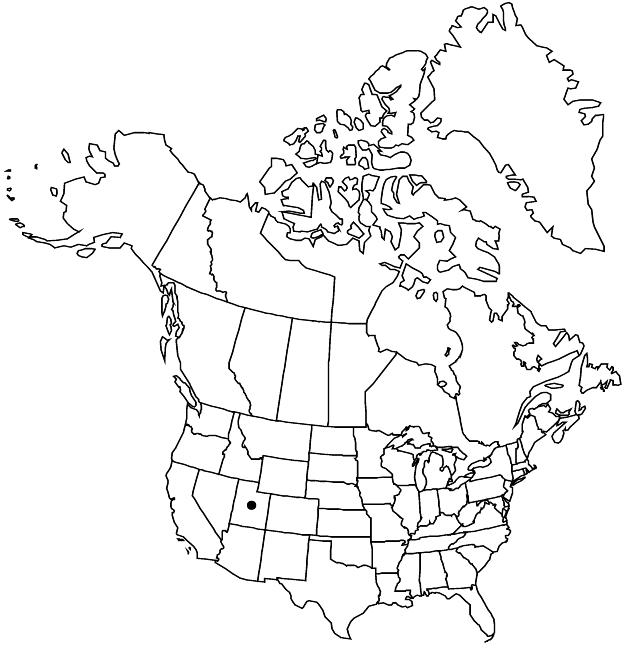Difference between revisions of "Eriogonum spathulatum"
Proc. Amer. Acad. Arts 10: 76. 1874.
FNA>Volume Importer |
imported>Volume Importer |
||
| (4 intermediate revisions by one other user not shown) | |||
| Line 8: | Line 8: | ||
}} | }} | ||
|common_names=Spoon-leaf wild buckwheat | |common_names=Spoon-leaf wild buckwheat | ||
| + | |special_status={{Treatment/ID/Special_status | ||
| + | |code=E | ||
| + | |label=Endemic | ||
| + | }} | ||
|basionyms= | |basionyms= | ||
|synonyms={{Treatment/ID/Synonym | |synonyms={{Treatment/ID/Synonym | ||
|name=Eriogonum nudicaule subsp. ochroflorum | |name=Eriogonum nudicaule subsp. ochroflorum | ||
|authority=S. Stokes | |authority=S. Stokes | ||
| + | |rank=subspecies | ||
}} {{Treatment/ID/Synonym | }} {{Treatment/ID/Synonym | ||
|name=Eriogonum spathulatum var. kayeae | |name=Eriogonum spathulatum var. kayeae | ||
|authority=S. L. Welsh | |authority=S. L. Welsh | ||
| + | |rank=variety | ||
}} | }} | ||
|hierarchy=Polygonaceae;Polygonaceae subfam. Eriogonoideae;Eriogonum;Eriogonum subg. Eucycla;Eriogonum spathulatum | |hierarchy=Polygonaceae;Polygonaceae subfam. Eriogonoideae;Eriogonum;Eriogonum subg. Eucycla;Eriogonum spathulatum | ||
| Line 39: | Line 45: | ||
-->{{#Taxon: | -->{{#Taxon: | ||
name=Eriogonum spathulatum | name=Eriogonum spathulatum | ||
| − | |||
|authority=A. Gray | |authority=A. Gray | ||
|rank=species | |rank=species | ||
| Line 53: | Line 58: | ||
|publication title=Proc. Amer. Acad. Arts | |publication title=Proc. Amer. Acad. Arts | ||
|publication year=1874 | |publication year=1874 | ||
| − | |special status= | + | |special status=Endemic |
| − | |source xml=https:// | + | |source xml=https://bitbucket.org/aafc-mbb/fna-data-curation/src/2e0870ddd59836b60bcf96646a41e87ea5a5943a/coarse_grained_fna_xml/V5/V5_515.xml |
|subfamily=Polygonaceae subfam. Eriogonoideae | |subfamily=Polygonaceae subfam. Eriogonoideae | ||
|genus=Eriogonum | |genus=Eriogonum | ||
Latest revision as of 22:11, 5 November 2020
Herbs, spreading, not scapose, 1.5–4 × 1–3 dm, tomentose or, rarely, glabrous, grayish. Stems spreading, without persistent leaf bases, up to 1/4 height of plant; caudex stems absent; aerial flowering stems erect, slender, solid, not fistulose, 1–2 dm, tomentose or rarely glabrous. Leaves sheathing up stem 1–8 cm, 1 per node; petiole 0.5–1.5 cm, tomentose; blade lanceolate to narrowly elliptic or narrowly spatulate, 1–4(–6) × 0.3–1 cm, tomentose on both surfaces, margins plane, rarely crenulate or revolute. Inflorescences cymose, 3–10 × 3–10 cm; branches dichotomous, tomentose or rarely glabrous; bracts 3, narrowly triangular, scalelike, 1–3 mm. Peduncles absent. Involucres (1–)3–6 per cluster, turbinate-campanulate, 2–3(–3.5) × 2–2.5(–3) mm, tomentose, rarely glabrous; teeth 5, erect, 0.5–0.8 mm. Flowers 2.5–3 mm; perianth ochroleucous or pale yellow, glabrous; tepals connate proximal 1/4, monomorphic, oblong; stamens exserted, 2.5–4 mm; filaments pilose proximally. Achenes brown, 3–3.5 mm, glabrous.
Phenology: Flowering Jul–Oct.
Habitat: Clay flats, limestone slopes, or gypsum outcrops, saltbush, sagebrush, and mountain mahogany communities, pinyon-juniper and conifer woodlands
Elevation: 1400-2200(-2600) m
Discussion
Eriogonum spathulatum is fairly common in west-central Utah. The typical expression, tomentose plants with ochroleucous flowers, occurs mainly in Iron, southern Juab, Millard, Piute, Sanpete, and Sevier counties. Plants with pale yellow to yellow perianths are seen infrequently in a few populations; these are always intermixed with plants bearing non-yellow perianths. Mixed populations of plants with either tomentose or glabrous flowering stems and inflorescence branches occur on gravelly limestone ridges in Beaver County; those with glabrous flowering stems and inflorescence branches have been separated recently as var. kayeae. In aspect, these approach Eriogonum artificis, a plant of sandy volcanic soils.
Selected References
None.
